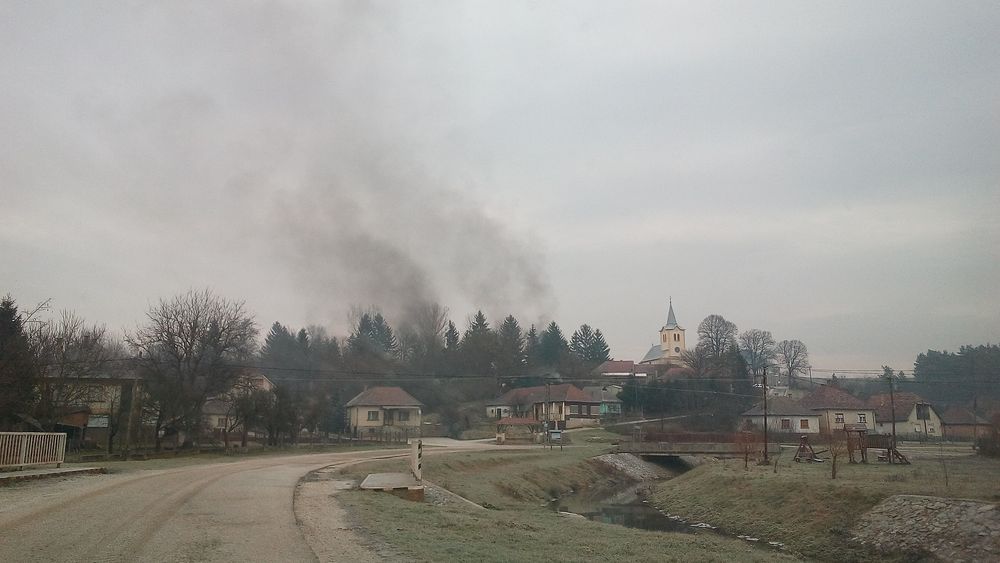
We’ve gotten used to hearing bad news from BAZ (Borsod-Abaúj-Zemplén) county in the northeast corner of Hungary: many of the 700,000 people who used to live there moved out in the last decades to pursue jobs; villages are dying out; a significant amount of the EU funds made available for the region were not utilised locally; air pollution levels – especially in the winter – are regularly critical.
The shadow of the mining and heavy industry past still lingers over the region. The restructuring has not yet been completed, and the county has not redefined or reestablished itself yet.
The need for renewal is obvious: in the county capital Miskolc and its surroundings, where half of the county population lives, businesses thrive and industrial parks in the area are being renewed.
Most of the active people are commuting within and beyond the county for reliable jobs. These are offered mostly by large companies, such as assembly plants in the chemical industry or services.
The under-educated people, however, have few options. In the small villages in the valleys, locals can only make ends meet by relying on public benefit work. There is a huge demand for workforce in agriculture, for example: locals can grow fruits and vegetables or have farm animals, all of which can be used by mass caterers of public or municipality cantines.
While visiting the Sajó valley settlements, we could witness firsthand the symptoms of the crisis of this post-industrial region. Here, in cold weather, thick smoke is drifting up from the chimneys: most locals heat with the generally cheap, but poor quality lignite (100,000 households nationwide) produced in the county, or with firewood, which is now more expensive than coal due to the increase in demand. Or, because of energy poverty, locals burn what they can: building debris, household waste, illegally purchased (wet) wood. Gas heating is rare because it is more expensive than either wood or coal. More than half of the residents use old boilers, convectors or stoves; contaminants from local coal do not only destroy the household devices but also the health of the villagers. Partly due to the air pollution coming from the surrounding power plants, partly due to the polluting residential heating and traffic, respiratory disease prevalence is high in the local villages and in Miskolc area.
The depopulation of settlements is a huge challenge. In the part of the county most affected by the crisis of industry, 15-20% of the locals have moved away in the past two decades, even as 44,000 public benefit jobs are available in the county. After the commuters leave their villages early in the morning for jobs in other cities, not too many people stay back in a typical village: it’s mostly the 100-200 public benefit workers that are left behind, the elderly and mothers with young children.
In the BAZ villages, the coal age has not ended because coal ran out – some of it remains underground.There are approx. 200 million tonnes of carbon in the Sajó valley and in the entire Borsodi basin, but the easily and cheaply extractable, better quality coal has been mined out decades ago. Nowadays, the lignite is not really worth the extraction even with a supporting government energy policy.
Nevertheless, in recent years local entrepreneurs in the Sajó valley opened a few small mines: the low-quality but cheap lignite is sold to local residents and public institutions and the gravel layer on top of the lignite to construction companies.
The villages do not really profit from these small mining ventures, beyond the small tax income from the mines. The mining entrepreneurs have their own specialised workforce so the mines do not even create jobs locally. What remains for the locals are the socio-environmental problems as the extracted and burnt lignite causes long-lasting and severe air, land and water pollution.
These villages often isolated or lacking capacity to apply for EU funds so they see limited opportunities to develop in a more consistent and sustainable way, e.g., to rely on their forests, natural resources and tourism. The temptation to revive the old coal tradition is always there, among local politicians.
We have been working together with the MTVSZ member organizations in the county to map the local situation, challenges and plans. We met various local stakeholders whose objective is the redevelopment of the county in accordance with sustainability principles. Based on these consultations, we think the main goal of a just transition program for the BAZ county should be less the retraining of the former miners or mining industry workers, but rather the promotion of structural change, resuming economic life on a sustainabile basis and creating lasting jobs.
During our field trip to the region, we have encountered several positive examples : Komlóska, Parasznya, Gömörszőlős, Hernádszentandrás and Trizs villages in BAZ. Over there, the local communities are stronger and more united, and local mayors or other leading politicians coordinate the redevelopment of the villages based on principles of sustainability and just transition. In these cases, the villages have a chance to develop and keep their residents. In the ‘just transition program’, we are working to address the inevitable economic, social and environmental challenges faced by the BAZ county, such as energy poverty and redevelopment after coal mining. Through the transparent participation of local interest groups we aim to assist with the development of the region so that it provides the community with a framework for fair jobs and livelihoods and sustainable opportunities.
